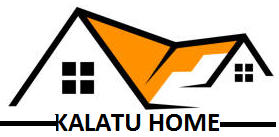Qatar’s real estate market offers a variety of rental options, from luxurious high-rise apartments in The Pearl to more affordable housing in Al Sadd and other bustling neighborhoods. Whether you’re an expatriate moving to Qatar for work or a local resident looking for a new home, understanding the rental process is essential to making an informed decision.
This guide covers everything you need to know about renting an apartment in Qatar, including costs, lease agreements, legal requirements, and tips to make the process smooth and hassle-free.
Understanding the Rental Market in Qatar
1. Popular Areas for Renting in Qatar
Qatar offers a mix of luxury and budget-friendly rental areas. Some of the most popular locations include:
- The Pearl-Qatar – A luxurious, waterfront community with high-end apartments, shopping centers, and restaurants. The Pearl apartments for rent offer stunning views, premium amenities, and a vibrant lifestyle, making them one of the most sought-after residential options in Qatar.
- West Bay – Ideal for professionals, offering modern apartments close to business hubs and embassies.
- Lusail City – A futuristic city with state-of-the-art apartments and vibrant living spaces.
- Al Sadd – A central location with more affordable rental options and excellent amenities.
- Al Wakrah – A quieter area suitable for families, offering spacious apartments and villas at competitive prices.
2. Types of Rental Properties
Renters can choose from:
- Furnished apartments – Move-in ready with furniture, kitchen appliances, and household essentials.
- Unfurnished apartments – Typically less expensive, allowing tenants to personalize the space.
- Serviced apartments – Offer hotel-like amenities such as housekeeping and concierge services.
Costs of Renting an Apartment in Qatar
1. Average Rental Prices
Rental costs vary based on location, property size, and amenities. Here’s an approximate price range for monthly rentals:
| Apartment Type | The Pearl & West Bay | Lusail | Al Sadd & Other Areas |
| Studio Apartment | QAR 5,000 – 7,500 | QAR 4,000 – 6,500 | QAR 3,500 – 5,000 |
| 1-Bedroom | QAR 7,000 – 10,000 | QAR 5,500 – 8,000 | QAR 4,500 – 6,500 |
| 2-Bedroom | QAR 10,000 – 15,000 | QAR 8,000 – 12,000 | QAR 6,000 – 9,000 |
| 3-Bedroom | QAR 14,000 – 20,000 | QAR 10,000 – 16,000 | QAR 8,000 – 12,000 |
2. Additional Costs to Consider
- Security Deposit – Usually equal to one month’s rent, refundable at the end of the lease.
- Agency Fees – If you use a real estate agent, expect to pay a fee (typically half or one month’s rent).
- Utilities – Water and electricity bills (Kahramaa) range from QAR 300 to 800 per month.
- Internet & TV – Prices vary by provider but typically cost between QAR 250 – 600 monthly.
The Rental Process in Qatar
1. Finding an Apartment
There are multiple ways to search for rental apartments in Qatar:
- Real estate websites & apps – Platforms like Property Finder, Qatar Living, and Saakin.
- Real estate agents – Hiring an agent can make the process easier but comes with extra costs.
- Direct from landlords – Some tenants negotiate directly with landlords to avoid agent fees.
2. Viewing the Property
Before signing a lease, visit the apartment and check:
- Overall condition of the property (paint, appliances, plumbing, etc.).
- Amenities like parking, gym, swimming pool, and security.
- Accessibility to workplaces, schools, hospitals, and public transport.
3. Signing the Lease Agreement
Once you find the right apartment, you’ll need to sign a Tenancy Agreement. This document outlines:
- Rental duration – Typically 12 months (some landlords offer shorter or longer terms).
- Payment terms – Monthly, quarterly, or yearly rent payments.
- Exit clauses – Terms for early termination or renewal.
- Maintenance responsibilities – Specifies whether the landlord or tenant handles repairs.
Important: Lease agreements must be registered with the Qatar Ministry of Municipality and Environment (MME).
4. Submitting Required Documents
To finalize the rental agreement, tenants usually need to provide:
- Passport copy
- Qatar ID (QID)
- Post-dated checks for rent payments
- Security deposit payment
5. Ejari Registration
All rental contracts in Qatar must be registered through Ejari, a government system ensuring tenancy agreements comply with local laws.
Legal Rights & Responsibilities of Tenants
1. Tenant Rights
- Right to a habitable and well-maintained property.
- Right to a refund of the security deposit if no damage occurs.
- Right to terminate the lease under specified conditions in the contract.
2. Tenant Responsibilities
- Paying rent on time.
- Maintaining the property and reporting any major issues.
- Following community rules (e.g., noise restrictions, pet policies, etc.).
Tips for a Smooth Rental Experience
- Negotiate Rent – Some landlords are open to negotiation, especially for long-term contracts.
- Inspect Everything – Ensure appliances, plumbing, and electrical systems are functional before signing the lease.
- Get Everything in Writing – Verbal agreements should be documented to avoid disputes.
- Understand Exit Clauses – Check if there are penalties for early termination.
- Beware of Scams – Always verify the landlord’s credentials and avoid deals that seem too good to be true.
Conclusion
Renting an apartment in Qatar can be an exciting but complex process. Understanding rental costs, contracts, and legal rights will help you make an informed decision and avoid potential pitfalls. Whether you’re looking for a luxury apartment in The Pearl or an affordable rental in Al Sadd, this guide equips you with all the information needed to find your ideal home in Qatar.
Need help finding a rental? Contact a trusted real estate agent or explore online listings to start your search today!

